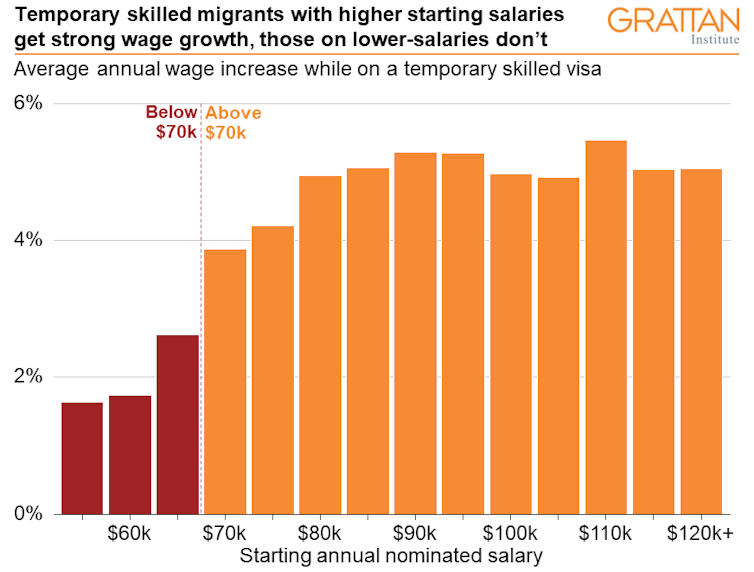After spending months ridiculing the Grattan Institute (for example, see here, here, here, here and here) on its proposed low $70,000 wage floor for temporary skilled migrants, which is $13,000 below the 2021 Australian median full-time income of $83,000, it appears Grattan may have finally come to its senses.
Commenting in The AFR, Grattan Institute economic policy program director, Brendan Coates, said the following regarding the ‘skilled’ migrant pay floor [my emphasis]:
Mr Coates said the skilled migration system could be simplified by settling a wage floor rather than restricting skilled migration to particular occupations where there was a shortage.
“A wage threshold is much simpler for both the migrant and the employer. They know if they earn a certain amount, then they can stay,” he said.
Such a system could reduce the wait time for a visa to just one week, Mr Coates said, since a company would just have to provide proof they were going to pay the applicant a wage above the threshold.
“We can scrap labour market testing, which just does not work. You can streamline sponsorship for accredited employers who you know only sponsor higher-wage workers. You could have a system where people can get sponsorship within a week.”
Mr Coates suggested trialling the policy with a $120,000 wage threshold, before expanding it to a lower level, such as $80,000.
$80,000 is still too low, given it is below the 2021 Australian median full-time income of $83,000, which includes unskilled workers. Why not simply support the ACTU’s $91,000 proposed wage floor and extend it to both temporary and permanent skilled migrants?
According to Grattan’s own research, skilled migrants at the $90,000 level earn faster pay rises, providing better budget benefits:

A $90,000 threshold would also knock-out 62% of temporary skills shortages (TSS) visas, thereby reducing population pressures, as well as improving job opportunities and wages for lower-to-middle income Australians:

Let’s be real here. Australia’s ‘skilled’ visa system cannot genuinely be regarded as skilled unless the pay floor is set above the median full-time income (which includes unskilled workers). In this regard, the ACTU’s $91,000 wage floor is sound, but should be expanded to permanent skilled visas (not only temporaries).
But give credit where credit is due. At least the Grattan Institute is learning… albeit slowly. And you can thank MB for that.

